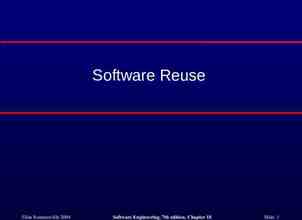Coding Analyzing Qualitative Data
29 Slides1,015.48 KB
Coding Analyzing Qualitative Data
If you intend to analyze qualitative data for your dissertation, you need to own and carefully read Saldaña, J. (2013). The coding manual for qualitative researchers. Los Angeles, CA: Sage.
Necessary Personal Attributes for Coding Saldaña, 2013 Organized Perseverance Able to deal with ambiguity Flexibility Creativity Rigorously ethical Extensive vocabulary
Coding as Data Concentration Data Corpus Codes Categories Themes Theory
What is a code? Data Corpus Codes A code is most often a word or short phrase that symbolically assigns a summative, salient, essence-capturing, and/or evocative attribute for a portion of language-based or visual data. Saldaña, 2013
What is a code? Data Corpus Codes A label that captures the essence of a small portion of content. Carroll, 20 minutes ago
An example Well, if you are not familiar with the internet—there is a couple people who are just not comfortable with it—they are just not going to use it. 1 1 technology use (topic coding) 1 technology use: opposition (evaluation coding) 1 “not comfortable” (in vivo coding)
Coding as Linking I think really when I was analyzing it there is technology for research there is technology for collaboration and there is technology for use in the classroom personally. I didn’t really get why we were having all of this exposure and really kind of quickly to some of these other technological things you know. And I don’t think quite honestly I haven’t done a lot of practice with it I did the ERIC things to get my research and the wiki and the deli.ic.ious. But I haven’t really seen how it is going to benefit the completion of this particular project at this point. Collaboration Personal use I don’t get it Too quick Practice ERIC; wiki Del.ic.ious No benefit Specific software INT: Do you have anything specifically that the technology has helped with in terms of the work for this class? I would say specifically the use of the ERIC and the library portal for this class specifically has been helpful. ERIC Library INT: Have you guys done much in terms of email back and forth? Our group has done email and we have used attaching our drafts and collaborating in our notes and communicating with each other about have you tried this have you tried that, that sort of thing just to kind of touch base and make sure we are all on the same page. INT: What do you think has been the hardest part that you have struggled with in terms of the technology? Email Collaborating Communicating Touching base Personal use
Coding as Linking I think really when I was analyzing it there is technology for research there is technology for collaboration and there is technology for use in the classroom personally. I didn’t really get why we were having all of this exposure and really kind of quickly to some of these other technological things you know. And I don’t think quite honestly I haven’t done a lot of practice with it I did the ERIC things to get my research and the wiki and the deli.ic.ious. But I haven’t really seen how it is going to benefit the completion of this particular project at this point. INT: Do you have anything specifically that the technology has helped with in terms of the work for this class? I would say specifically the use of the ERIC and the library portal for this class specifically has been helpful. INT: Have you guys done much in terms of email back and forth? Our group has done email and we have used attaching our drafts and collaborating in our notes and communicating with each other about have you tried this have you tried that, that sort of thing just to kind of touch base and make sure we are all on the same page. INT: What do you think has been the hardest part that you have struggled with in terms of the technology?
How to Begin Focus on your purpose statement Think about philosophical orientations – Metaphysics, epistemology, or axiology – Realist, pragmatic, or existentialist Re-examine your paradigmatic approach – Narrative, phenomenological, or case study Start making reflexivity memos about all of this
Coding
How to do this with paper From the beginning keep a coding notebook Transcribe all observations, interviews, and memos – During transcription identify natural separations – Set up the page so the right 1 3 is blank – Print transcripts double line spaced First re-read your transcripts – Write quick memos as they come to mind – Do precoding
What to code? In the beginning learning what does not need to be coded happens by coding everything Some say (Strauss, Walcott, and others) that minutia can provide insight—code everything
Emerson’s General List of Questions as You Code What are people doing? What are they trying to accomplish? How, exactly, do they do this? What specific means and/or strategies do they use? How do members talk about, characterize, and understand what is going on? What assumptions are they making? What do I see going on here? What did I learn from these notes? Why did I include them?
Saldaña adds What surprised me? (to track your assumptions) What intrigued me? (to track your positionality) What disturbed me? (to track the tensions within your value, attitude, and belief systems) [remember Peshkin and subjectivity]
First Cycle Coding Initial coding of the data corpus is done in a way that makes sense for your study. Saldaña lists 24 possible first cycle coding methods in 7 categories. Here are a few.
Attribute Coding Descriptive data about the setting Well, if you are not familiar with the internet—there is a couple people who are just not comfortable with it—they are just not going to use it. 1 47 year old special education teacher. Fifth week of Ed 555
Magnitude Coding Ordinal evaluation of responses Well, if you are not familiar with the internet—there is a couple people who are just not comfortable with it—they are just not going to use it. 1 Attitude toward technology use: positive, neutral, negative NEGATIVE
Subcoding Second order tags Well, if you are not familiar with the internet—there is a couple people who are just not comfortable with it—they are just not going to use it. 1 TECHNOLOGY USE-DISCOMFORT
Structural Coding Predetermined research topics Well, if you are not familiar with the internet—there is a couple people who are just not comfortable with it—they are just not going to use it. 1 INTEREST IN USING TECHNOLOGY IN RESEARCH WORK Well, if you are not familiar with the internet—there is a couple people who are just not comfortable with it—they are just not going to use it. 1
Descriptive Coding Nouns that describes topic Well, if you are not familiar with the internet—there is a couple people who are just not comfortable with it—they are just not going to use it. 1 INTERNET 1
In Vivo Coding Respondents’ words Well, if you are not familiar with the internet—there is a couple people who are just not comfortable with it—they are just not going to use it. 1 1 “JUST NOT COMFORTABLE”
Process Coding Gerunds (actions) Well, if you are not familiar with the internet—there is a couple people who are just not comfortable with it—they are just not going to use it. 1 REFUSING 1 WORRYING ABOUT SKILL 1
Emotion Coding Emotions recalled or inferred Well, if you are not familiar with the internet—there is a couple people who are just not comfortable with it—they are just not going to use it. 1 1 STUBBORNNESS
Some First Cycle Coding Types Attribute: Descriptive data about the setting Magnitude: Ordinal evaluation of responses Subcoding: Second order tags Structural: Predetermined research topics Descriptive: Nouns that describes topic In Vivo: Respondents’ words Process: Gerunds (actions) Emotion: Emotions recalled or inferred
First Cycle Coding You will probably need multiple methods simultaneously but try to carry whatever you choose all the way through. You may need to do first cycle coding more than once.
Second Cycle Coding Reorganization of first cycle codes in order to identify: – Categories – Themes – Theories Elimination of marginal or redundant codes
Some Second Cycle Coding Types Pattern: Identifying units of analysis (themes) Focused: Identifying codes occurring most frequently Axial: Identifying the dimensions of a category
Coding Approaches Read everything and make notes of any potential themes that come to mind Read until a possible theme appears and then follow it through all of the data Code every sentence or piece of sentence and then recode into categories Try to pick a single coding strategy and follow it through all the data


































